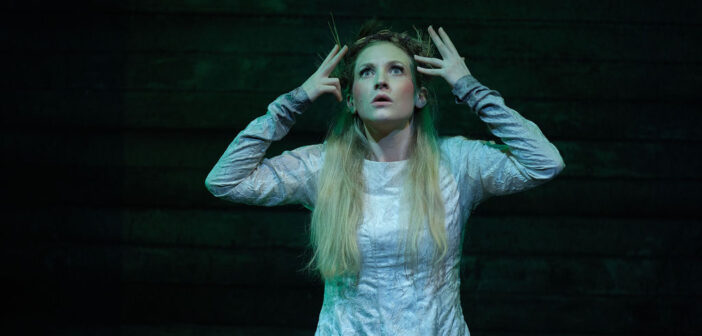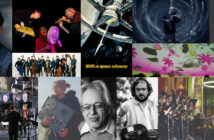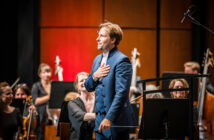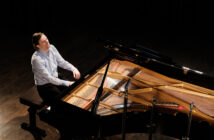This page is also available in / Cette page est également disponible en:
![]() Francais (French)
Francais (French)
On Nov. 16, Opéra de Montréal (OdeM) took up the challenge of presenting a little-known work from the French repertoire for the first time in its recent history. Of the entire production, conductor Jacques Lacombe was the only one to have performed it before. It sure speaks for the rarity of this Hamlet by Ambroise Thomas.

Scene from Opéra de Montréal’s Hamlet. Photo: Vivien Gaumand
But what a discovery, what an abundance of musical themes, what genius of orchestration! Without analysing the score in detail, we can legitimately be enthusiastic about the saxophone solo at the start of Act II, Scene 2, a gesture as astonishing as it is admirable for its modernity, given that the work was written in 1868. That being said, the musical writing remains firmly rooted in the Italian opera seria tradition, characterised by a certain dramatic slowness and solemnity that gives a lot of space to its great arias.
The other risk-taking challenge was for Sarah Dufresne to take on the role of Ophélie. The young coloratura soprano, trained at the OdM’s Atelier lyrique, had already made a name for herself winning second prize at the 2022 edition of the Montreal International Musical Competition, singing two of Ophélie’s big scenes. But what would it be to measure herself against the entire opera?
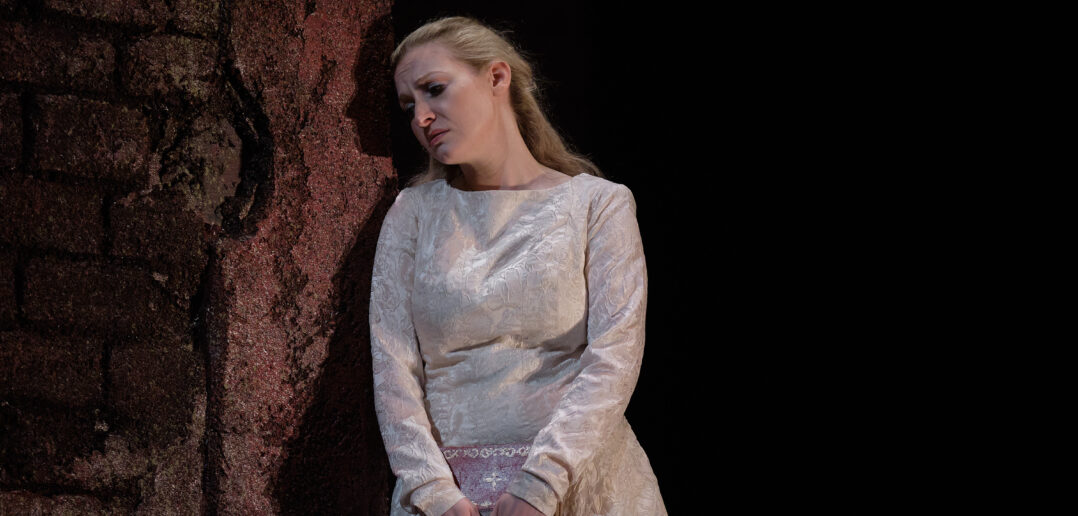
Sarah Dufresne (Ophélie) in Opéra de Montréal’s Hamlet. Photo: Vivien Gaumand
It turned out to be a triumph. For a moment, we thought we were reliving the golden age of opera, when legendary sopranos reigned from high above with the world at their feet. What was most striking was Dufresne’s vocal stamina and the seal of quality she gave at all times, not only in Act 4’s great mad scene, but everywhere else. First proof came early in Act 2, where Dufresne easily matched the international calibre of Karine Deshayes singing Gertrude, Hamlet’s mother. The French mezzo-soprano whose career is nearing 30 years at the highest level (Metropolitan Opera, Opéra de Paris…) represents a prestigious find for OdeM. Tenor Antoine Bélanger, who has sung lead roles with the company on several occasions, played a secondary character here (Laërte, Ophélie’s brother). It didn’t stop him from drawing attention thanks to his power and vocal lyricism.
Baritone Elliot Madore (Prince Hamlet) was the only member of the cast who didn’t come off as well. His voice was pleasing to the ear and his dramatic intensity certainly placed him among those who were most committed to their role. This intensity sometimes caused him to run out of breath and lose volume. He clearly relied on consonants to help him project his voice better, but in doing so, sang in French as one sings in German. However, these two languages are nothing alike when it comes to pronunciation.
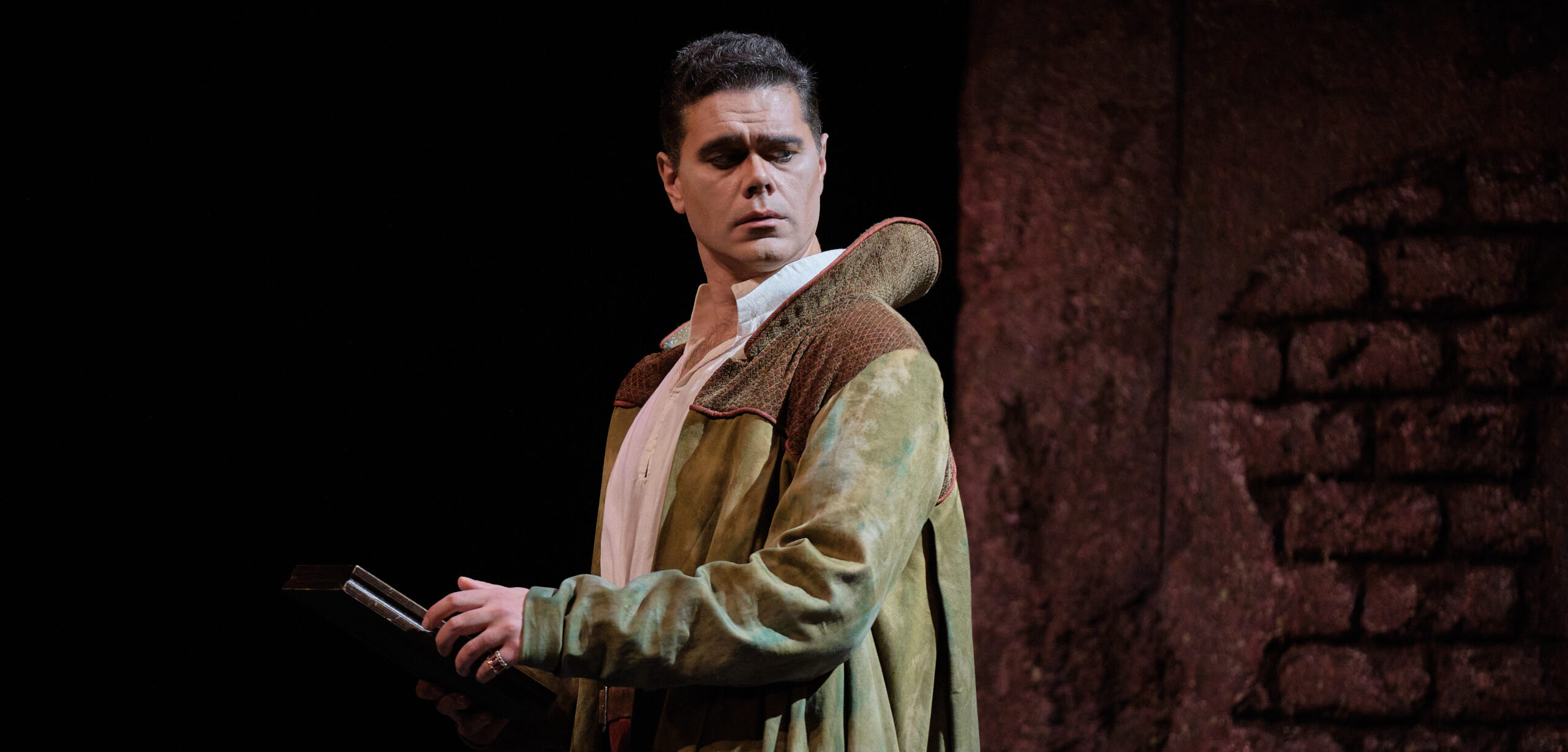
Elliot Madore (Prince Hamlet) in Opéra de Montréal’s Hamlet. Photo: Vivien Gaumand
As for the production, director Alain Gauthier had warned he would not confine himself to a single era. The black and gold costumes took us back to the Shakespearean era, while the brick walls offered a more contemporary feel. The story itself has something very contemporary about it: rash actions, false information, unfounded accusations, disinterest in love, emotional distress…
The director chose to feed into the work’s aforementioned stasis by moving the characters at an often slow pace. Fortunately, his staging of unscripted scenes during orchestral numbers avoided excessive dragging and kept the drama alive. As early as the prelude, Queen Gertrude and Prince Hamlet took turns to pay their respects at the tomb of the late King, placed inside a hollow cube. As the director had explained, this set served as a doorway to other dimensions (specifically, between the world of the living and that of the dead). During the saxophone solo preceding Hamlet’s accusations against his uncle Claudius, the prince was the only one to move in the semi-darkness while all the other characters remained frozen. This helped to give a visual manifestation of his murderous intentions unbeknownst to everyone, and reinforced the sense of isolation from the group.
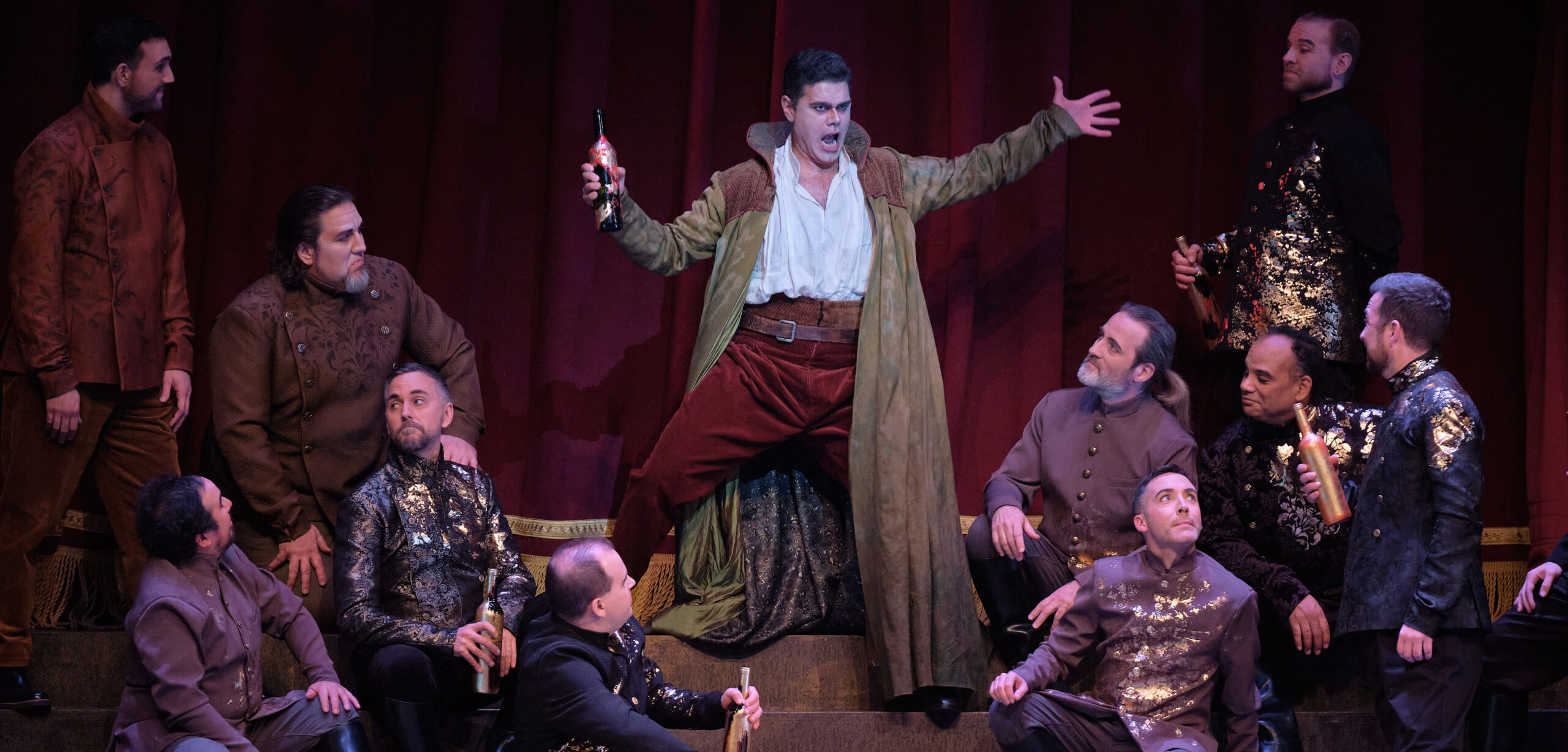
Scene from Opéra de Montréal’s Hamlet. Photo: Vivien Gaumand
Although generally faithful to Thomas’s work, the staging offered a strange death for Ophélie, reminiscent of Marguerite’s heavenly ascent in Gounod’s Faust. Let’s remind ourselves, however, that the libretto, like the original play, explicitly indicates her sinking into the depths of a blue lake. This fiddling with the character’s iconography was regrettable. Here, Ophélie laying branches of wild rosemary on the ground was perhaps the closest nod to the original text.
The OdeM chorus gave an excellent performance, thanks in particular to their very fine tenors. With the score’s numerous ensemble scenes, they had every opportunity to shine. Let’s hope we don’t have to wait another 100 years to hear this opera again in Montreal!
Hamlet by Ambroise Thomas. November 16, at Salle Wilfrid-Pelletier. Next performances November 19, 21 and 24. For tickets, visit www.operademontreal.com
This page is also available in / Cette page est également disponible en:
![]() Francais (French)
Francais (French)

